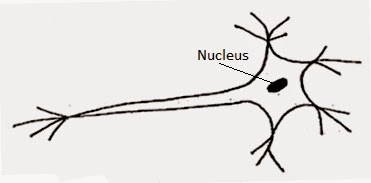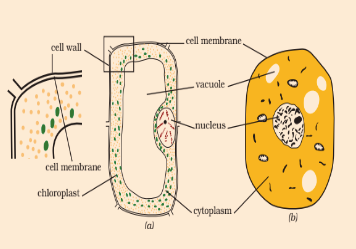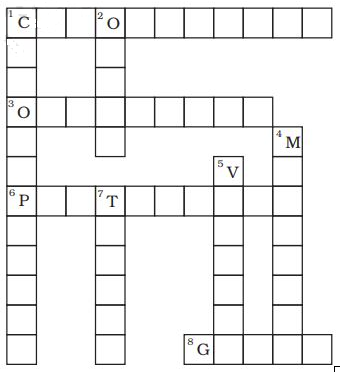NCERT Solutions for Class 8 Science Chapter 8 Cell Structure and Functions
NCERT Solutions for Class 8 Science Chapter 8 Cell Structure and Functions
Topics as given in Class 8 Science Chapter 8 Cell Structure and Functions:
Section | Topic Name |
8 | Cell Structure and Functions |
| 8.1 | Discovery of the Cell |
| 8.2 | The Cell |
| 8.3 | Organisms show Variety in Cell Number, Shape and Size |
| 8.4 | Cell Structure and Function |
| 8.5 | Parts of the Cell Cell Membrane |
| 8.6 | Comparison of Plant and Animal Cells |
NCERT Solutions for Class 8 Science Chapter 8 Cell Structure and Functions: Have you ever seen the construction of a building? Obviously yes, then you must have noticed that bricks together form walls that further form rooms, which turn into floors and then into a building. In the solutions for NCERT Class 8 Science Chapter 8 Cell Structure and Functions, you will study in detail about the structure and functions of the cells. Cell Structure and Functions Class 8 Solutions contain questions based on the components of the cell. Class 8 Students must refer to the NCERT Solutions for Class 8 for other subjects to get all their queries resolved. Try to solve NCERT Textbook Questions. If you face any problem or if you want to understand any question in a better way then refer to the NCERT Solutions for other classes (6 to 12) that help students to perform better in exams. Continue reading to go through the questions and answers given in NCERT Solutions for Class 8 Science Chapter 8.
NCERT Solutions for Class 8 Science Cell Structure and Functions - PDF Download
According to the latest CBSE Syllabus 2023-24, Cell Structure and Function class 8 has been removed from the syllabus.
Cell Structure and Functions Class 8 Science NCERT Textbook Questions Answers
Class 8 Science Chapter 8 question answer with detailed explanation are given below:
Cell Structure and Functions Class 8 Questions and Answers:
Q1. Indicate whether the following statements are True (T) or False (F)
(a) Unicellular organisms have one-celled body. (T/F)
Answer:
(True) uni refers to only one.
Q1. Indicate whether the following statements are True (T) or False (F).
(b) The basic living unit of an organism is an organ. (T/F)
Answer:
( False ) Basic unit of life is a cell.
Q1. Indicate whether the following statements are True (T) or False (F).
(c) Amoeba has irregular shape. (T/F)
Answer:
( True ) Amoeba has irregular shape
CBSE NCERT Solutions for Class 8 Science Chapter 8 Cell Structure and Functions:
Q2. Make a sketch of the human nerve cell. What function do nerve cells perform?
Answer:
Here is the sketch of the human nerve cell:

Function-
The nerve cell receives and transfers messages, thereby helping to control and coordinate the working of
different parts of the body.
Cell Structure and Functions Class 8 Solutions:
Q3. Write short notes on the following.
(a) Cytoplasm
Answer:
Cytoplasm -The jelly-like substance between the nucleus and the cell membrane is called cytoplasm. nucleus. Various other components, organelles, of cells are present in the cytoplasm. These are mitochondria, Golgi bodies, ribosomes, etc.
Q3. Write short notes on the following.
(b) Nucleus of a cell
Answer:
Nucleus of the cell-
It is an important component of the living cell. It is generally spherical and located in the centre of the cell. the nucleus contains thread-like structures called chromosomes. These carry genes and help in inheritance or transfer of characters from the parents to the offspring.
Cell Structure and Functions Class 8 NCERT Solutions
Q4. Which part of the cell contains organelles?
Answer:
The cytoplasm is the part of the cell that contains organelles like are mitochondria, Golgi bodies, ribosomes, etc.
NCERT Solutions for Class 8 Science Chapter 8:
Q5. Make sketches of animal and plant cells. State three differences between them.
Answer:

Differences between them-
Plant cell-
- The cell wall is present
- the large size of vacuoles
- Plastides are present
Animal Cell-
- The cell wall is absent
- vacuole size is small as compared to plant cell
- No plastids, except for protozoan euglena
Class 8 Science Chapter 8 Question Answer:
Q6. State the difference between eukaryotes and prokaryotes.
Answer:
Eukaryotes -
- mostly are multicellular
- the nucleus is well defined and surrounded by the nuclear membrane.
- nucleolus is present
- All organisms other than bacteria and blue-green algae are called eukaryotes.
Prokaryotes -
- These are mostly unicellular
- The nucleus of the bacterial cell is not well organised
- There is no nuclear membrane.
- bacteria and blue-green algae are prokaryotes
Class 8 Science Chapter 8 NCERT Solutions:
Q7. Where are chromosomes found in a cell? State their function.
Answer:
Chromosomes (thread like structure) found inside the nucleus. It plays an important role.
These carry genes and help in inheritance or transfer of characters from the parents to the offspring
Class 8 Cell Structure and functions NCERT Solutions:
Q8. ‘Cells are the basic structural units of living organisms’. Explain.
Answer:
The cell is the smallest unit of living organisms and is capable of all life functions. These are the building blocks of life. that's why cells are referred to as the 'basic structure and functional unit of life'.
Class 8 Science Ch 8 Question Answer:
Q9. Explain why chloroplasts are found only in plant cells?
Answer:
In a plant cell, green coloured plastids are called chloroplasts.
They provide green colour to the leaves.chlorophyll in the chloroplasts of leaves, is essential for photosynthesis. Since photosynthesis can perform by only plants so chloroplast is present in plants.
Class 8 Science Chapter 8 Solutions:
Q10. Complete the crossword with the help of clues given below.
Across
1. This is necessary for photosynthesis.
3. Term for component present in the cytoplasm.
6. The living substance in the cell.
8. Units of inheritance present on the chromosomes.
Down
1. Green plastids.
2. Formed by collection of tissues.
4. It separates the contents of the cell from the surrounding medium.
5. Empty structure in the cytoplasm.
7. A group of cells.

Answer:
Across
1. CHLOROPHYLL
3. ORGANELLE
6. PROTOPLASM
8. GENES
Down
1.CHLOROPLASTS
2.ORGAN
4. MEMBRANE
5. VACUOLE
NCERT Solutions for Class 8 Science Chapter 8 - Cell Structure and Functions
If you are facing any issue in understanding the Cell Structure and functions Class 8 Solutions, then don't worry and again go through that NCERT Book and try to understand all the concepts of every topic. Write the Class 8 Science Chapter 8 question answer by your own and then compare them with NCERT Solutions for Class 8 Science Chapter 8 Cell Structure and Functions. You will see that your knowledge, as well as the understanding of these concepts, will increase and you will be able to explain the answers in a better way. For example, you can say that the smallest unit of a building is a brick. Similarly, the smallest structural and functional unit of living organisms is called ‘cell’.
Science Chapter 8 Class 8 solutions explain how cells of prokaryotes are different from those of eukaryotes. After reading the details of prokaryotic and eukaryotic cells given in Chapter 8 Science Class 8, you will be able to easily distinguish between prokaryotic and eukaryotic cells. After completing the Ch 8 Science Class 8, go for NCERT exercise. To get correct and detailed answers, refer to the Cell Structure and Functions Class 8 NCERT Solutions, to get an understanding of cells and its components.
Chapter 8 Class 8 science: Basic components of a cell
Cells are composed of different components that help a cell in performing essential functions of life. In chapter 8 Cell structure and function, you will study the details of the basic components of a cell. These important cell components are
- Cell wall
- Cell membrane
- Nucleus
- Mitochondria
- Endoplasmic reticulum
- Ribosomes
- Lysosomes etc.
Among the topics given above from the Class 8 Science Chapter 8 Solutions, the most important ones from which questions can come are the definition of the cell, who discovered cell, different parts of the cell, differences between plant and animal cells etc. After going through the Class 8 Science Chapter 8 NCERT Solutions, you must be able to understand all the questions and answers:
Benefits of NCERT Solutions for Class 8 Science Chapter 8 Cell Structure and Function:
- Class 8 Cell Structure and Functions NCERT Solutions will also boost your knowledge.
- You will get all the answers to Chapter 8 Class 8 Science and it will help you to score good marks in your school exam.
- Cell Structure and Function Class 8 Questions and Answers will also help you to understand all the concepts easily.
- NCERT is the base of your learning.
- Class 8 Science Chapter 8 PDF is easy to download and use offline.
NCERT Solutions For Class 8th Science
| Chapter 1 | Crop Production and Management |
| Chapter 2 | Microorganisms Friend and Foe In Microorganisms |
| Chapter 3 | Synthetic Fibres and Plastics |
| Chapter 4 | Materials Metals and Non Metals |
| Chapter 5 | Coal and Petroleum |
| Chapter 6 | Combustion and Flame |
| Chapter 7 | Conservation of Plants and Animals |
| Chapter 8 | Cell Structure and Functions |
| Chapter 9 | Reproduction in Animals |
| Chapter 10 | Reaching the Age of Adolescence |
| Chapter 11 | Force and Pressure |
| Chapter 12 | Friction |
| Chapter 13 | Sound |
| Chapter 14 | Chemical Effects of Electric Current |
| Chapter 15 | Some Natural Phenomena |
| Chapter 16 | Light |
| Chapter 17 | Stars and the Solar System |
| Chapter 18 | Pollution of Air and Water |
NCERT Solutions For Class 8th: Subject-Wise
Also Check NCERT Books and NCERT Syllabus here:
We hope you will ace your examination with the help of NCERT Solutions for Class 8 Science Chapter 8 Cell Structure and Functions.
Popular Questions
Courses After 12th
Applications for Admissions are open.
As per latest syllabus. Physics formulas, equations, & laws of class 11 & 12th chapters
JEE Main Important Chemistry formulas
Get nowAs per latest syllabus. Chemistry formulas, equations, & laws of class 11 & 12th chapters
JEE Main high scoring chapters and topics
Get nowAs per latest 2024 syllabus. Study 40% syllabus and score upto 100% marks in JEE
JEE Main Important Mathematics Formulas
Get nowAs per latest syllabus. Maths formulas, equations, & theorems of class 11 & 12th chapters
